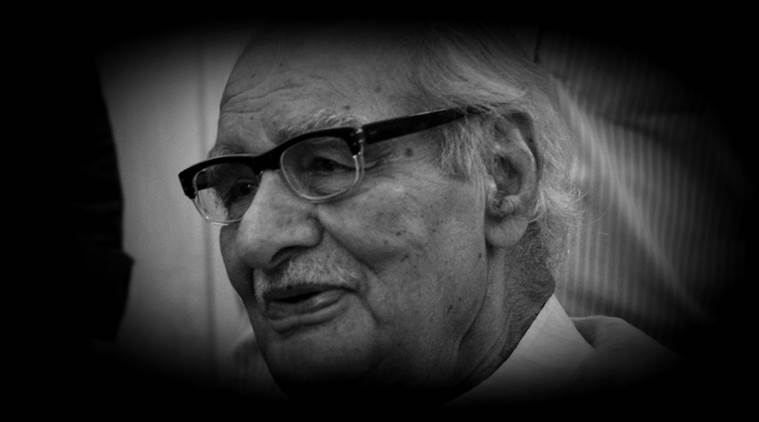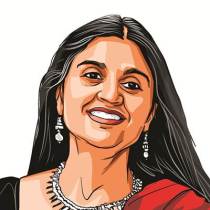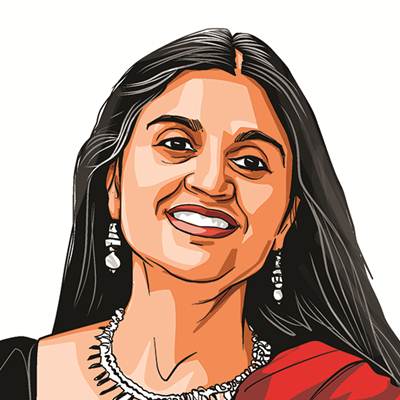Fighter and candle-lighter
Kuldip Nayar’s lifelong work was to speak truth to the powerful.

Kuldip Nayar passed away on August 23 at the age of 95. (Express Photo By Amit Mehra)
I was privileged to engage closely with Kuldip Nayar, legendary journalist, parliamentarian and human rights activist, who passed away recently. After the Emergency was declared — I was in high school then — my late father, Viren Chhabra, a former colleague of his at The Statesman had dinner with him and his wife, Bharti. They discussed the state of affairs and when he was leaving, my father noticed a policeman outside pretending to read a newspaper and noting his car number. He called Bharti the next morning and warned her that Kuldip might be arrested. She replied, “After you left, they came.”
A policeman came with a warrant of arrest for my father — he was responsible for printing The Statesman, which was carrying blank editorials to protest the press censorship. Later, he recounted the experience to me: “I thought fast, knowing in the Emergency no bail was possible. So I started showing him the body of work I had printed and published. One of them was a photographic account, A Life In The Day of Indira Gandhi, by staff photographer Raghu Rai. The policeman left with the book and without me.” The incarceration of Kuldip Nayar and thousands of other journalists and activists left a deep impression on me. While in college as an elected representative of the student union, I invited Nayar who mesmerised the students of Hindu College on the linkages between the freedom of press and democracy along with accounts of his time in prison. He was a hero.
I was studying at Washington State University when news of the 1984 carnage against the Sikhs came. As concerned students we gathered money for them and formed a network group of Indian students to discuss what we could do. Someone brought the Peoples’ Union of Civil Liberties (PUCL) report, “Who Are The Guilty”, and it made a profound impression on us. Nayar was one of the founder members of PUCL and I decided I would volunteer with it on my return. As soon as I returned, I visited him at his home, then in Sundar Nagar. I learned that PUCL had split into two groups — PUCL and PUDR (Peoples Union of Democratic Rights). I decided to work with the latter because it had a younger group of activists and was close to my workplace.
Nayar took a deep and abiding interest in all the activist work — the report on “Custodial Rapes In Delhi”, the “Citizens’ Tribunal On Ayodhya”, the Gujarat carnage of 2002, the attack on Christians in Kandhamal and the Narmada Bachao Andolan. We were constantly engaged in discussions and he was always serious, questioning and exhorting us to document and show truth to power.
In 1997, I started work on an archive of surviving freedom fighters. Nayar felt the INA (Indian National Army) were backed by the Japanese, who were basically fascists. I argued that the INA were essentially freedom fighters and took support of the opportune moment of the Second World War to fight for India’s freedom. Nayar agreed that this work was important and had to be documented. It was with his tacit support that the archive of surviving freedom fighters and witnesses of the bloodbath of Partition was started and oral testimonies have been recorded from across India, Malaysia, Singapore, Thailand and Myanmar over the last two decades. At some point, he said, “stop calling me Kuldip uncle; you are now an equal, call me Kuldipji” and smiled with his innate sense of democratic values.
Despite his advancing age, Nayar was present at every democratic rights meeting. He watched my documentary on custodial rape, “Now, I will Speak”, in Mumbai, sitting on the floor. He was passionate about the younger generation engaging with the real issues — hunger, poverty and communalism. While interviewing him on Doordarshan just before he turned 93, I asked him, “You are the youngest person I know in mind and spirit. How do you do it?” He replied, “I have seen Partition.” He told me that he had a tattoo of the crescent moon on his arm when he was young, which got him nearly killed. A bystander saved him. He later added that “the man who saved my parents at Sialkot railway station was first a human being and then a Pakistani”.
It was his faith in the intrinsic humanity of man that kept his spirit going and motivated him to light candles every year at the Attari-Wagah border on August 14, the eve of Independence, the Pakistan Day and his birthday, despite derisive comments.
When I called to wish him on his 95th birthday, he told me he had completed his new book, From Jinnah to Modi. When I reminded him that our last round of archival recordings was due he said, “I have a slight cough; as soon as I am better.” Sadly it was pneumonia and he suffered a heart attack in the hospital. I was one of the privileged few allowed to visit him in the hospital.
At his cremation, like so many others, I broke down and vowed that we would carry his values of liberty and fraternity and abiding love for peace and secularism further. That is what Kuldipji always wanted.
The writer is an award-winning author and filmmaker and the director of the ‘Hamaara Itihaas’ archive.
For all the latest Opinion News, download Indian Express App
More From Sagari Chhabra
- The Ones Free India ForgotWhy INA’s soldiers still await a pension and recognition from home...
- Emergency AlertKuldip Nayar’s eyewitness account of India’s darkest days..







































No hay comentarios:
Publicar un comentario